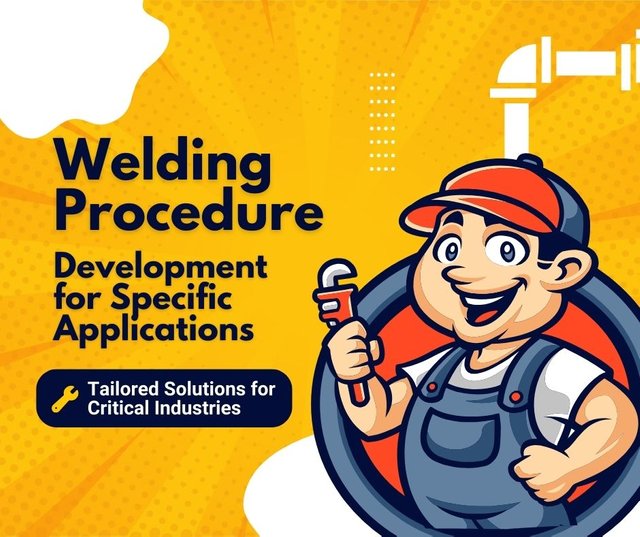Welding Procedure Development for Specific Applications: Tailored Solutions for Critical Industries

Welding is a fundamental process across various industries, each with its unique requirements and challenges. Developing welding procedures tailored to specific applications is crucial for ensuring the integrity and reliability of welded components. This article offers specialised guidance on creating welding procedures for critical industries like aerospace, pipeline construction, and structural steel fabrication, emphasising the specialised considerations and standards involved.
I. Aerospace Welding Procedures
A. Material Selection and Qualification:
Aerospace components often involve specialised materials like aluminum alloys, titanium, and high-strength steels. Selecting and qualifying the appropriate filler metals and base materials is crucial for meeting aerospace standards.
B. Joint Design and Configuration:
Aerospace components often require intricate joint designs for optimal strength-to-weight ratios. Considerations may include butt welds, T-joints, and fillet welds, each with specific configuration and preparation requirements.
C. Tolerances and Distortion Control:
Tight tolerances are critical in aerospace applications. Controlling distortion through techniques like back purging, clamping, and fixturing is essential to ensure precise fit and alignment.
D. Non-Destructive Testing (NDT):
Rigorous NDT methods like radiographic testing and ultrasonic testing are often mandated for aerospace components. Establishing stringent NDT criteria and inspection protocols is paramount.
E. Quality Documentation:
Comprehensive documentation, including material certifications, welding procedure specifications, and welder qualifications, is imperative to meet stringent aerospace quality standards.
II. Pipeline Welding Procedures
A. Material Compatibility and Environmental Considerations:
Pipeline welding often involves materials susceptible to hydrogen-induced cracking. Implementing preheat and post-weld heat treatment procedures is critical for mitigating this risk.
B. Welding Process Selection:
Factors like joint access, material thickness, and environmental conditions influence the choice between processes like Shielded Metal Arc Welding (SMAW), Gas Metal Arc Welding (GMAW), and Submerged Arc Welding (SAW).
C. Stringent Weld Inspection Requirements:
Pipeline welds undergo extensive inspection, often involving automated ultrasonic testing (AUT) or radiographic testing. Establishing clear criteria for acceptable welds is essential.
D. Coating and Corrosion Protection:
Considerations for coatings and corrosion protection are integral to pipeline integrity. Developing procedures for applying specialised coatings and cathodic protection systems is crucial.
III. Structural Steel Fabrication Procedures
A. Base Material and Filler Metal Selection:
Structural steel fabrication involves a wide range of material grades and types. Selecting appropriate filler metals and establishing compatibility with base materials is paramount.
B. Welding Position and Accessibility:
Structural steel components are often fabricated in various positions, including overhead and vertical. Proper technique selection and welder training are essential for achieving high-quality welds.
C. Welding Sequence and Preheat:
Proper welding sequence and controlled preheat are crucial for minimising distortion and ensuring sound welds in structural steel applications.
D. Weld Procedure Qualification Testing:
Rigorous qualification testing, including procedure qualification records (PQRs) and welder performance qualifications (WPQs), is standard practice to ensure the reliability of structural steel welds.
E. Quality Control and Inspection:
Utilising methods like visual inspection, ultrasonic testing, and magnetic particle testing is essential for ensuring weld quality in structural steel fabrication.
IV. Conclusion
Developing welding procedures tailored to specific industries and applications is a critical aspect of ensuring the integrity and reliability of welded components. By addressing the unique considerations of industries like aerospace, pipeline construction, and structural steel fabrication, organisations can meet the rigorous standards and safety requirements of their respective fields. Adhering to specialised protocols, material selection, and inspection criteria ensures that welds perform reliably in critical applications, contributing to the overall success and safety of engineering projects.